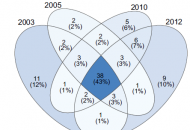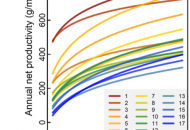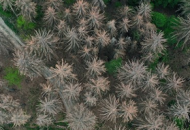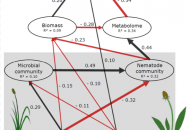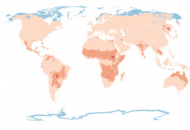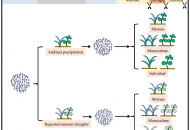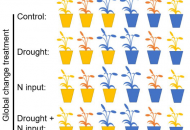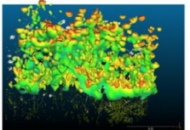Publication
-
New publication from Lange et al. in Global Change Biology: Increased soil carbon storage through plant diversity strengthens with time and extends into the subsoil
Soils are important for ecosystem functioning and service provisioning. Soil communities and their functions, in turn, are strongly promoted by plant diversity, and such positive effects strengthen with time. However,…
-
New publication from Lange et al. in Scientific Reports: Restoration of insect communities after land use change is shaped by plant diversity: a case study on carabid beetles (Carabidae)
There is no doubt about the insect decline currently taking place in ecosystems with large anthropogenic impacts. Thus, there is a need for practices that avoid insect decline and or…
-
New publication from Wagg et al. in Nature Communication: Biodiversity–stability relationships strengthen over time in a long-term grassland experiment
Numerous studies have demonstrated that biodiversity drives ecosystem functioning, yet how biodiversity loss alters ecosystems functioning and stability in the long-term lacks experimental evidence. We report temporal effects of species…
-
New publication from Mahecha et al. in Nature: Biodiversity loss and climate extremes — study the feedbacks
As humans warm the planet, biodiversity is plummeting. These two global crises are connected in multiple ways. But the details of the intricate feedback loops between biodiversity decline and climate…
-
New publication from Ristok et al. in Journal of Ecology: Plant diversity effects on herbivory are related to soil biodiversity and plant chemistry
Insect herbivory is a key process in ecosystem functioning. While theory predicts that plant diversity modulates herbivory, the mechanistic links remain unclear. We postulated that the plant metabolome mechanistically links…
-
New publication from Isbell et al. in Front Ecol Environ: Expert perspectives on global biodiversity loss and its drivers and impacts on people
Despite substantial progress in understanding global biodiversity loss, major taxonomic and geographic knowledge gaps remain. Decision makers often rely on expert judgement to fill knowledge gaps, but are rarely able…
-
New publication from Chen et al. in Nature Communications: Drought-exposure history increases complementarity between plant species in response to a subsequent drought
Drought-exposure history increases complementarity between plant species in response to a subsequent drought Growing threats from extreme climatic events and biodiversity loss have raised concerns about their interactive consequences for…
-
New publication from Schmid et al. in Grassland Research: Removing subordinate species in a biodiversity experiment to mimic observational field studies
Positive effects of plant species richness on community biomass in biodiversity experiments are often stronger than those from observational field studies. This may be because experiments are initiated with randomly…
-
New publication from Dietrich et al. in eLife: Eco-evolutionary dynamics modulate plant responses to global change depending on plant diversity and species identity
Global change has dramatic impacts on grassland diversity. However, little is known about how fast species can adapt to diversity loss and how this affects their responses to global change.…
-
New publication from Guimarães-Steinicke et al. in Remote Sensing: Diversity Effects on Canopy Structure Change throughout a Growing Season in Experimental Grassland Communities
Increasing plant diversity commonly enhances standing biomass and other ecosystem functions (i.e., carbon fluxes, water use efficiency, herbivory). The standing biomass is correlated with vegetation volume, which describes plant biomass…
Posts navigation
We’ve made the move from Twitter to Bluesky. Follow us there for all the latest updates.


